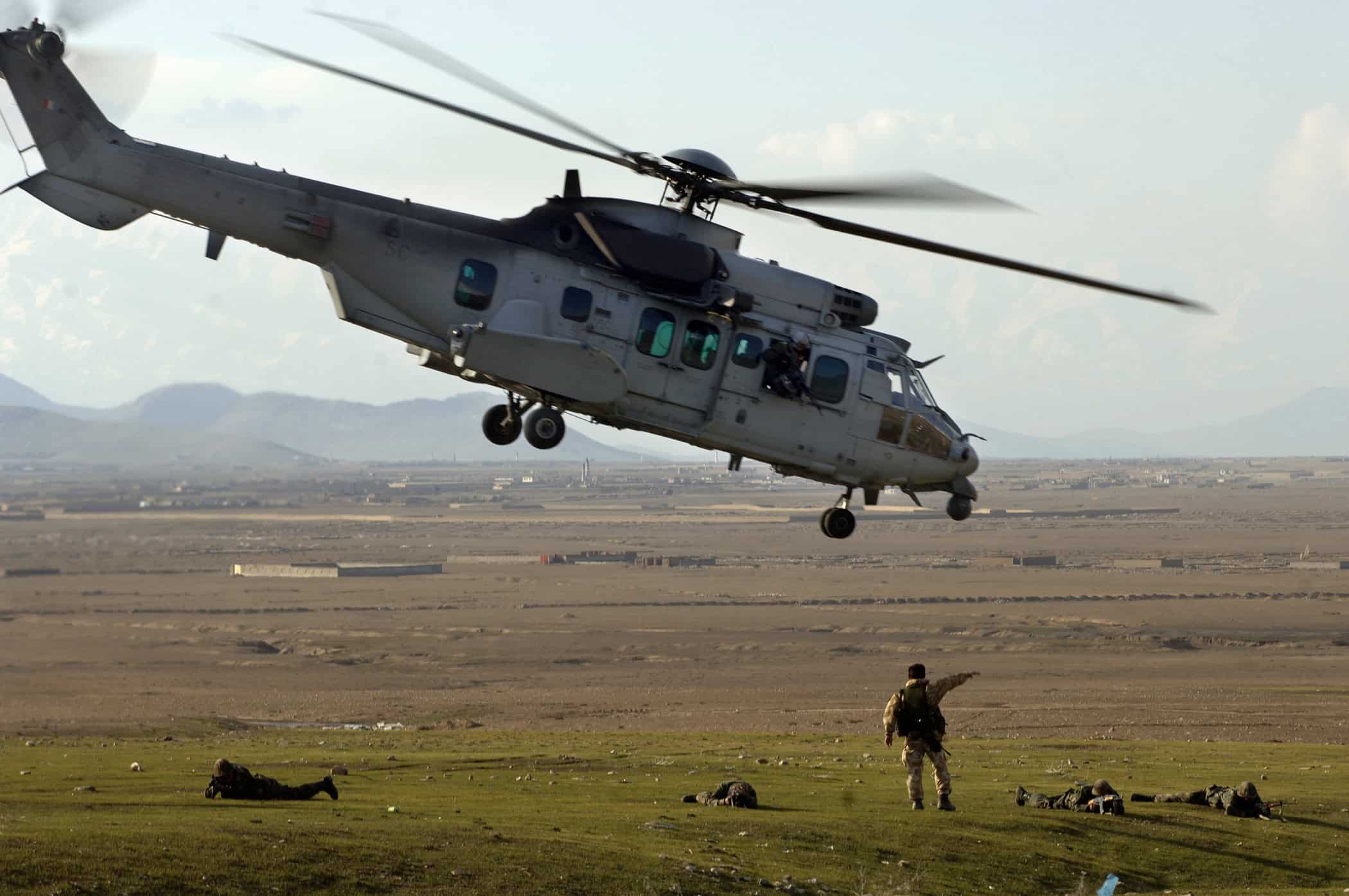Military
The US Military Budget and the President That Grew It by $325 Billion

Published:

The military budget of the United States is outrageous. For fiscal year 2025, the Department of Defense has requested $850 billion for its operation, or about 3% of the national income, 15% of the entire U.S. federal budget, and almost 50% of all federal discretionary spending. But how does this money compare to the military budgets throughout our history?
We looked at the data since the creation of the National Military Establishment, which eventually became the Department of Defense. The methodology for the ranking of the data is described later. Here is the budget through the years and the presidents who increased it the most.

The military budget typically increases drastically under Republican presidencies and during Republican governments. While the reasons for this range from corruption, xenophobia, and fascism, the facts point to the conclusion that the longer Republicans remain in power, the more money is spent on the military, the more military conflicts the United States engages in, and the less money is spent on U.S. citizens and domestic programs.

In one of the greatest moments of irony in all of human history, the Department of Defense was formed in 1947 “to provide the military forces needed to deter war and ensure our nation’s security”. Yet, as history has shown, the United States has repeatedly used the power of the Department of Defense to launch more offensive wars and military interventions than any country in modern history.
That amount of military personnel, hardware, bases, and more required to not only invade and overthrow hostile governments but also project and maintain military supremacy around the globe costs a lot of money.
The United States has the largest military budget in the world by number and percentage of federal budget. It is followed by the People’s Republic of China, India, the United Kingdom, and then Russia.
Over 40% of all the money spent on the planet for military purposes is spent by the United States, being larger than the next ten countries combined. We dedicate the largest share of our GDP to military spending, more than almost every other country.
This budget does not include funds used for the research, production, maintenance, storage, disposal, or cleanup of nuclear weapons. It also does not cover military pensions or payments to widows and the families of dead soldiers. It does not cover the interest paid on debts incurred in past military conflicts, foreign arms sales, or military development assistance. It does not include the Department of Homeland Security, counter-terrorism, or NSA operations.
The military budget of the United States has grown regularly throughout history, but because the economy has grown at a faster rate, the percentage of GDP spent on the military has fallen since its peak during World War II.
Additionally, there have been several instances of increases in military spending against the recommendation of the Department of Defense, or even contrary to their protests, because elected officials wanted to “create jobs” or boost the economy in their district by bringing military operations to their constituents or giving millions to companies that supported the election campaigns.

The military spending of the United States is at its highest point in history, in terms of inflation-adjusted metrics, but is relatively low when compared to the percent of GDP spent, as the budget for 2025 includes around 3% of the U.S. GDP for military spending. Through the Cold War, the typical spending was between 8% and 10%.
In 2023, the breakdown of the military budget by account was:
When broken down by branch of the military, the budget was allocated like this:
The Pentagon has never had an audit since the Department of Defense was created, and the last attempt in 2017 resulted in three failed audits.
The current Secretary of Defense projects that the military budget will need to increase by 3% to 5% every year in order to “modernize”.

The United States has 1,328,000 active military personnel, which is the third-most in the world, with 799,500 in reserve.
The budget was used to import $652.6 million in military equipment between 2014 and 2022 and export $28.5 billion worth of guns and equipment at the same time. (This does not include military support and treaty defense)
The United States operates around 750 military bases in other countries, most of which are in Europe and Asia, which cost over $55 billion every year (as of 2021).
Around half of the total military budget is for personnel and their related costs, while the other half is for research, development, testing, and procurement of weapons. Conscription is cheaper than an all-volunteer military force, but the United States has not used conscription since the 1970s.

We collected data from the American Enterprise Institute, the government’s published data, and various other reports, including those from the World Bank.
In order to maintain some sense of comparability, all the budgets are given in 2021 dollars, adjusted for inflation, and compared to the total budgets for an administration. We compare the budgets between administrations, from one administration to the next, not from year to year, and not between administrations that were not consecutive. So, while some years might have smaller increases, the cumulative increase across a single term might result in a larger jump in spend than other years.
Since the creation of the Department of Defense, there have been three presidencies that ended with a higher military budget than when they began. All three of them are republican. The other presidencies of George H. W. Bush, Clinton, Obama, and Biden all ended with lower military budgets (as of the publishing of this article). President Carter implemented the first defense budget during his presidency. On average, Democratic presidents decrease defense spending by $8.2 billion and Republican presidents increase spending by $46.3 billion.
Here are the three presidents that increased the military budget.

The Donald Trump presidency ended with a military budget of $703,723 million after the steep cuts made during the Obama Presidency which had a military budget of $684,265. Donald Trump also implemented the fourth-highest budget annual increase in the history of the Department of Defense during his first year in office.

Ronald Reagan left office with a military budget of $611,444 million, a dramatic increase over the $516,233 million budget of President Carter. It was during his presidency that the United States escalated the Cold War with the Soviet Union, reversing the policy of détente (de-escalation) from earlier administrations. He ordered a massive military buildup and implemented the Reagan Doctrine which gave covert and overt funding and aid to anti-communist movements. He supplied and equipped the Mujahedeen in Afghanistan (which would later lead to the rise of al-Qaeda and Osama bin Laden).
Reagan provided arms and funding to many groups accused of human rights abuses, genocides, and other atrocities as long as they fought against communism, even if those governments were legally elected or not openly communist. This includes the Contras in Nicaragua and President Montt of Guatemala which had committed a genocide of the Ixil people. Reagan also invaded Grenada and ordered bombings on Libya,

President Bush used the events of September 11, 2001, to launch the invasion of Iraq, the War in Afghanistan, implement the Patriot Act, and create the Department of Homeland Security and the Transportation Security Administration.
Because of his surge in popularity after the attacks, Bush implemented the Bush Doctrine which was a policy of preemptive military strikes against any nation that the President believed might be aiding terrorist organizations.
Despite evidence that Iraq did not have weapons of mass destruction, Bush misled the American people and invaded Iraq in 2003, leading to the long, expensive, and destructive occupation of Iraq. He vetoed the withdrawal of U.S. forces during the subsequent occupation.
It was President Bush who first placed the blame for the violence between Israel and Palestine on the Palestinian people, angering many states in the region and human rights advocates.
President Bush implemented the three largest year-on-year increases in Department of Defense history and five of the top ten largest yearly increases.
Retirement planning doesn’t have to feel overwhelming. The key is finding expert guidance—and SmartAsset’s simple quiz makes it easier than ever for you to connect with a vetted financial advisor.
Here’s how it works:
Why wait? Start building the retirement you’ve always dreamed of. Click here to get started today!
Thank you for reading! Have some feedback for us?
Contact the 24/7 Wall St. editorial team.